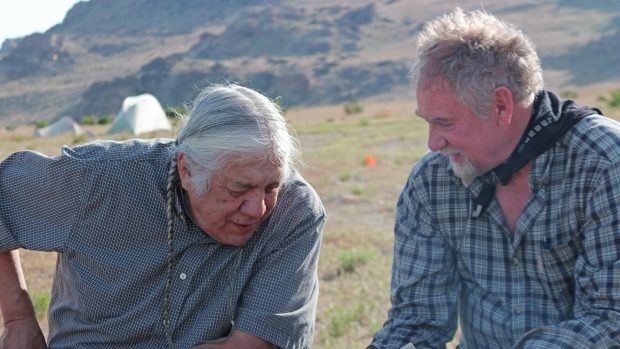
Raymond Yakeleya, a Dene filmmaker originally from Tulita, N.W.T., is struck by the rich history of his people.
He attended the second Dene Migration Symposium hosted by the Tsuut'ina Nation, a Dene community near Calgary, earlier this month. Part of the focus of the conference was on the people defined by the Dene family of languages and their movements across North America.
"It seems that all of the Dene were true nomads," Yakeleya said. "They were not scared to go around the next corner or go around the next mountain in search of their livelihood in North America."
Dene language family widespread
John Ives is a professor in the department of anthropology at the University of Alberta in Edmonton, and the executive director of the Institute of Prairie Archaeology. His work - as well as the work of his students and colleagues - is central to modern understanding of Dene history.
"Dene speakers go from the North slope of Alaska all the way to northern Mexico," Ives said.
"It's one of the most remarkable language family distributions in the New World - it's probably the largest."
Ives points to research showing a Dene language connection as far away as Russian Siberia, where there is a "vocabulary of about 120 words that appear to be shared between the Dene languages and the Ket languages of the Yenisei River in Siberia," he said.
"The structure of the languages and the way verbs are inflected ... are very similar. So there's this very strong suspicion that there is this historical connection that goes back deep, deep in time."
Dene origins 'one of the big questions'
But linguistic markers are not the only way researchers approach Dene history and origins.
Todd Kristensen is a Ph.D. candidate at the University of Alberta and a regional archaeologist for Alberta's Archeological Survey. He said the discovery across a large region of tools made from Tertiary Hills Clinker stone challenges any notion that pre-contact Northerners lived in isolated pockets.
Part of Kristensen's current work is to track the spread of raw materials, and the stone tools made from those materials, across North America. The circulation of those tools can provide clues to the origins and movement of Northern Dene.
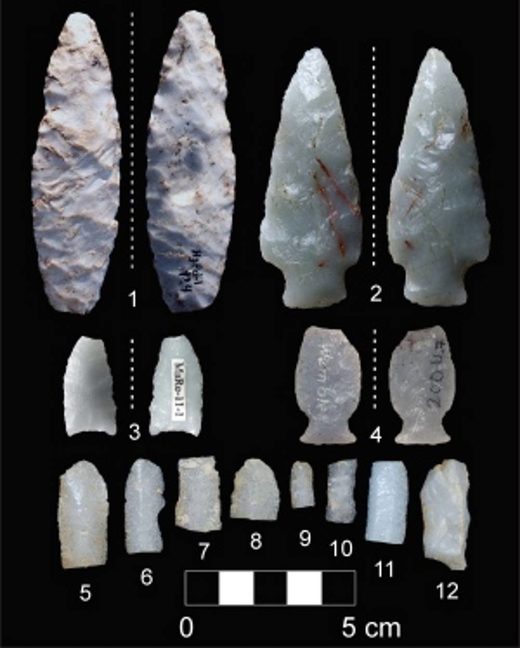
Kristensen said archeological evidence today doesn't give the kind of definitive answers to questions of Dene origins in the North many might like to have, but his work supports the thesis that the people of pre-contact Northern Canada travelled and traded widely.
Kristensen's Ph.D. research includes a focus on Tertiary Hills Clinker, a unique glassy stone found in deposits near modern day Tulita.
Valued for its beauty and tool making attributes, Kristensen said tools made of Clinker have been found at sites across the Northwest Territories, central Alberta and into the Yukon.
"So you've got this social network that beginning around at least 9,000 years ago encompassed about 1.25 million square kilometres," he said.
This spread of Clinker supports the idea of long distance "intergroup contacts" between Indigenous populations in Alberta and the Mackenzie Valley, and could provide insight into the migration of Dene people southward into Alberta and the American Southwest.
Kristensen said this challenges any notion that pre-contact Northerners lived in isolated pockets, but instead traveled widely and had extensive social networks that covered "swathes" of the continent.
Natural disaster and forced migration, or, the 'year of two winters'
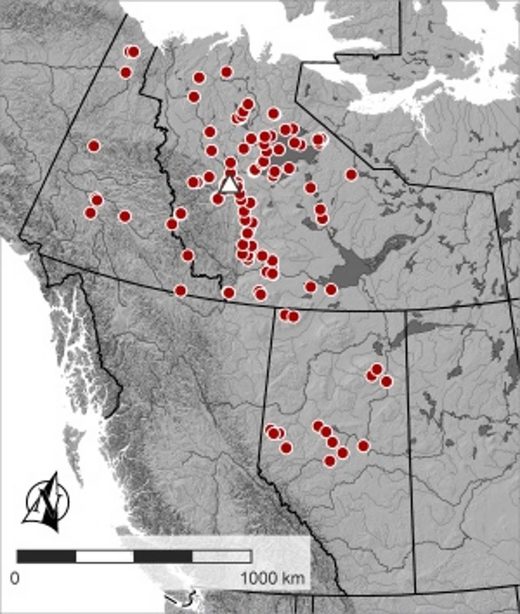
Yakeleya points to oral histories passed down through the generations that may provide clues as to why his ancestors traveled, and how the Dene came to settle in the Mackenzie Valley.
"There's a story my granny told my mom, and my mom related to me," Yakeleya said. "She called it the 'year of two winters.'"
Yakeleya said the story describes a year when spring didn't give way to summer, but was followed instead by a second winter so severe it forced his ancestors to leave their homes - perhaps in Alaska - and travel east and south into the Mackenzie Valley, where they settled upon more hospitable ground.
Yakeleya believes that second winter was the result of a volcanic eruption that spread a thick layer of ash so widely that it had the effect of introducing winter-like conditions where the ground was covered in ashen 'snow.'
He says his ancestors may have traveled into mountain ranges in search of safer ground.
"They didn't know how to find the passes to go through them [the mountains] ... and the story goes the elders said, 'Let's just follow the caribou, the caribou will be our guides.' And they led them into the Mackenzie Valley."
Oral history meets modern science
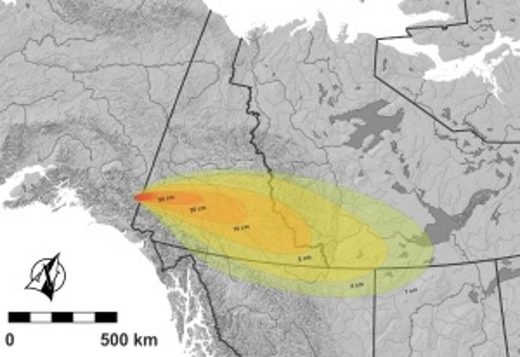
"There were two eruptions from the same general area," Kristensen said. "One spread north - around 1,800 years ago - and the second one spread east around 1,200 years ago. I don't know if it could have spurred migrations in Alaska, but certainly people think that it did spur some migrations of people from southern Yukon and into the Northwest territories."
These eruptions, called the White River Ash event, were centred on Mount Churchill in Alaska, and may have triggered the migration of Northern Dene southward. The spread of volcanic ash would have had a devastating effect on the land and its people. Volcanic ash is not like the ash a person might clean out of a fireplace.
"The ash is microscopic bits of natural volcanic glass - obsidian. They're extremely sharp and they have a terrible impact on aquatic eco-systems," Ives said.
"[For] any of us terrestrial creatures breathing ... it's very hard on our lungs [and] it abrades plants.
"The immediate consequences, even if they were brief, would have been quite severe."
Ives said traces of the ash deposit can be found as far east as the west side of Great Slave Lake, and that it travelled at higher elevations and settled as far away as Greenland.
"You get the impression that it was a huge event in the Northern Hemisphere and that the ash circulated widely across the North Atlantic."
Ives said these events, particularly the second larger eruption about 1,200 years ago in the same location, could have spurred the Dene ancestors of modern day Apache and Navajo to leave subarctic Canada and follow a "plains bison hunting lifestyle" southward to their ultimate modern homelands.
11,000 years of volcanic eruptions
Kristensen said he's not convinced the white ash event in particular had a major impact on social networks in the Northwest Territories, but there have been many volcanic eruptions along the west and northwest coast of North America over the past 11,000 years.
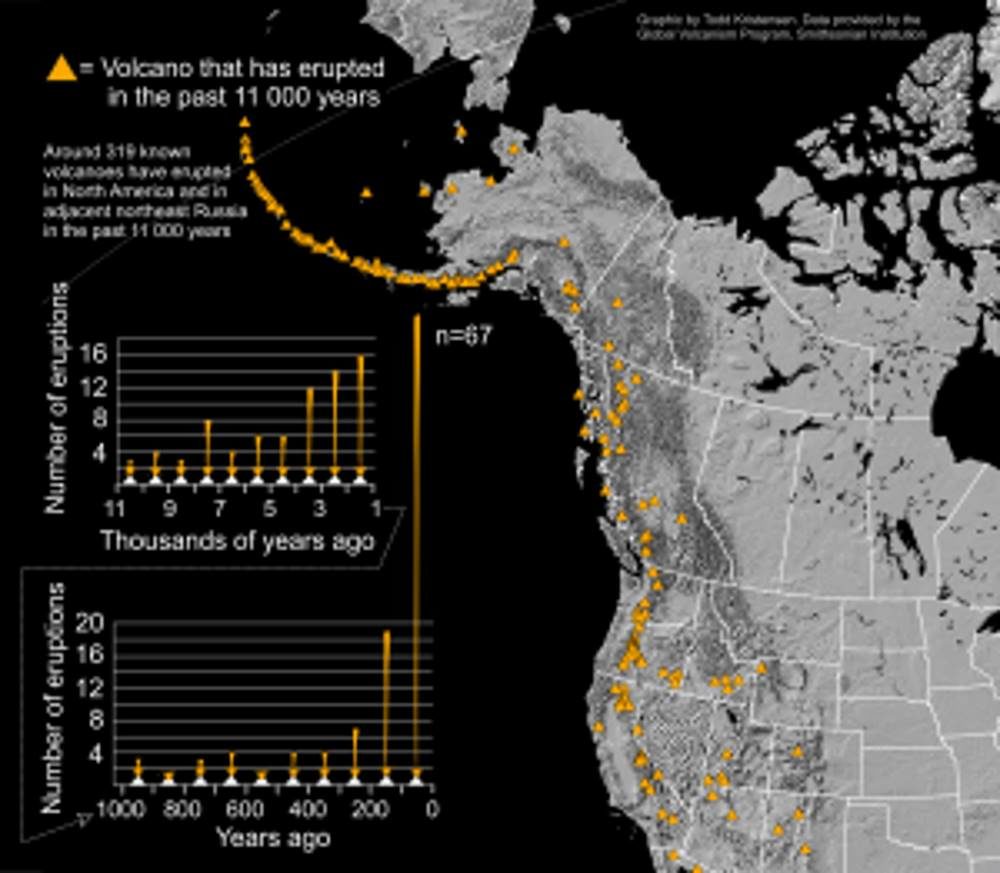
"It's certainly a possibility," Kristensen said.
"That theme picks up elsewhere in the North and across North America - that there are these volcanic eruptions that end up blacking out the sun for months on end - and it is described as that 'year of two winters' when things are cold for a long time."
Oral histories are fertile ground for researchers, even if it can be difficult at times to nail down archeological evidence to support those histories.
"It's a stimulating source of research and archaeologists in particular spend a lot of time trying to detect the archaeological signatures of oral histories," Kristensen said.
"It's important for us to discover ourselves"
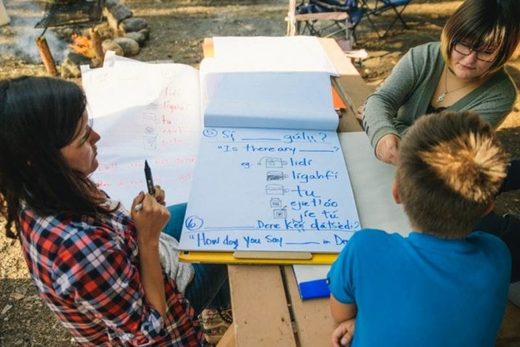
"We've been working to amass 20,000 words in the [pan-Dene] language family," Ives said of contemporary research.
"For me as an archeologist, when historical linguists can look at words and reconstruct words for things in the past, it can tell us a great deal about the objects that we find in the past.
"A word can have semantic information buried in it. The object [alone] can't tell you as much as an archeologist and a linguist working together."
Yakeleya is working toward getting a long-standing documentary film project on Dene origins and migration into production.
For him, understanding the history and language of the Dene goes beyond its scientific utility. It's a way of connecting his people, especially the youth, to who they are today by understanding where they came from in time's most distant yesterday.
"This is our history," he said. "Not history as told by the white man - this is the history as told by our people and we need to value that. We need to understand our DNA trail, our linguistic trail.
"It's important for us to discover ourselves."
Yakeleya said there is a sense of urgency to the work.
"The conference highlighted that we're losing our language at a very fast rate ... We're losing a lot of the traditional knowledge and language of our people."
Yakeleya hopes the next Dene migration conference can find a northern sponsor and be hosted in the Northwest Territories.



Reader Comments